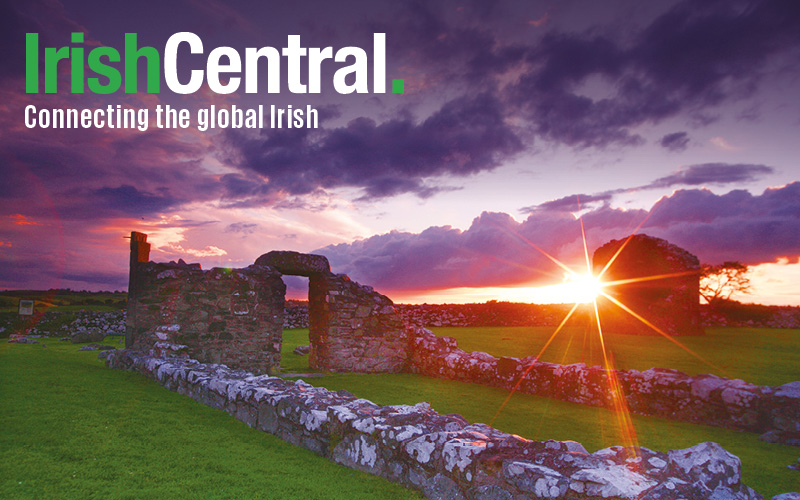The ‘Éire’ sign at Malin Head, with the lookout post number ’80,’ has been restored. The sign was an important navigational marker for pilots in World War II to alert aircraft to neutral Ireland.
Photographs of the restoration, completed in late 2015, were taken from a drone by Peter Homer and have been shared widely on social media.
The Derry Journal reports the sign was restored by the Malin Head Community Association, with work being carried out by the Malin FÁS Scheme.
Photographer Homer, also an amateur radio enthusiast and researcher, has written about the history and significance of the signs and lookout posts along the coastline.
“On the flat plain just below the Banba’s Tower at Malin Head, Ireland’s most northerly point is the word EIRE, marked in stone and painted white. This was an important navigational marker for pilots in World War Two to alert aircraft to neutral Ireland (“Éire” English: “Ireland”).
In 1939, a Coastal Watch was set up to guard against the invasion of Ireland. Eighty-three sites were chosen around the coast, from North Louth to Inishowen in Donegal, and Look Out Posts (LOP) were established on these sites, with a team of watchmen, who were usually locals.
According to EireMarkings.org, watchmen were initially housed in tents, but eventually a standard pill box was erected at each site.
The sites were numbered, with number 1 being located in Ballagan Point, County Louth, and number 82 on Inishowen Head, County Donegal. Foileye Head Kerry was no. 83.
From 1942-1943, The EIRE signs, or Neutrality Signs, were added along the coast to alert pilots to their location. Shortly after the EIRE signs were erected, the identifying number of the LOP was added, thereby enhancing the sign’s value as a navigational aid.
A list of LOPs was given to allied pilots to reduce the risk of them crashing in the Republic of Ireland and to give them greater detail on their location.
The signs were useful only during the day, but fires may have been lit near the signs at night.
Eight of the signs can still be seen on headlands in Donegal, where the greatest number of them has survived. Three of these are still visible on the Inishowen Peninsula: No.80 Malin Head, No.81 Glengad Head and No.82 Inishowen Head.
The No. 80 Malin Head sign was built in 1944. It is well known and has many visitors.
*Originally published in November 2015.




Comments